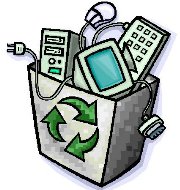E-Waste (Management) Rules, 2022
The Indian Government issued notification on E-Waste (Management) Rules, 2022, which will come to effect from next financial year.
What is E-Waste (Management) Rules, 2022?
- The E-Waste (Management) Rules, 2022 was published by the Ministry of Environment, forest and climate change on November 2, 2022.
- The new rules will come to effect from April 1, 2023.
- They will apply to all businesses and individuals involved in manufacturing, sales, transfer, purchase, refurbishing, dismantling, recycling and processing of e-waste or electrical and electronic equipment.
- Under the new rules, the number of items that have been categorized as e-waste has been increased from 21 to 106.
- It includes all electrical devices and radiotherapy equipment, nuclear medicine equipment and accessories, Magnetic Resonance Imaging (MRI), electric toys, air conditioners, microwaves, tablets, washing machine, refrigerator, iPad and others.
- This includes electronic components, consumables, parts and spares that make the electronic products operational.
- The new rules are not applicable for waste batteries, which are covered under the Battery Waste Management Rules, 2022.
- It is also not applicable for packaging plastics, which are covered under the Plastic Waste Management Rules, 2016.
- It also does not apply for micro enterprises and radio-active wastes, which are covered under the Micro, Small and Medium Enterprises Development Act, 2006 and Atomic Energy Act, 1962 respectively.
What are the key features of the rules?
- The rules restrict the use of hazardous substances for manufacturing electrical and electronic equipment. This comes in response to the deaths caused by exposure to radioactive materials.
- Manufacturers of electronic equipment are mandated to reduce the use of lead, mercury, cadmium and other others that can harm human health and environment.
- These materials can adversely affect brain, heart, liver, kidneys and skeletal system. It also causes harmful effects on neurological and reproductive systems.
- Under the new rules, the Central Pollution Control Board (CPCB) will conduct random sampling of electrical and electronic equipment placed in the market to monitor and verify compliance of reduced use of hazardous substances.
- Manufacturers are required to use technologies and methods that make the end product recyclable. They are also required to ensure the compatibility of components or parts developed by different manufacturers. This will minimise the generation of e-wastes.
- Imports or sales of new electrical and electronic equipment are allowed only if they comply with the government regulations. If the product does not comply with the rules, the manufacturer must withdraw all samples from the market.
- It is the responsibility of the manufacturer to collect e-wastes generated during the manufacturing process and ensure that they are recycled or disposed as per the rules.
Month: Current Affairs – November, 2022
Category: Environment Current Affairs • India Nation & States Current Affairs


